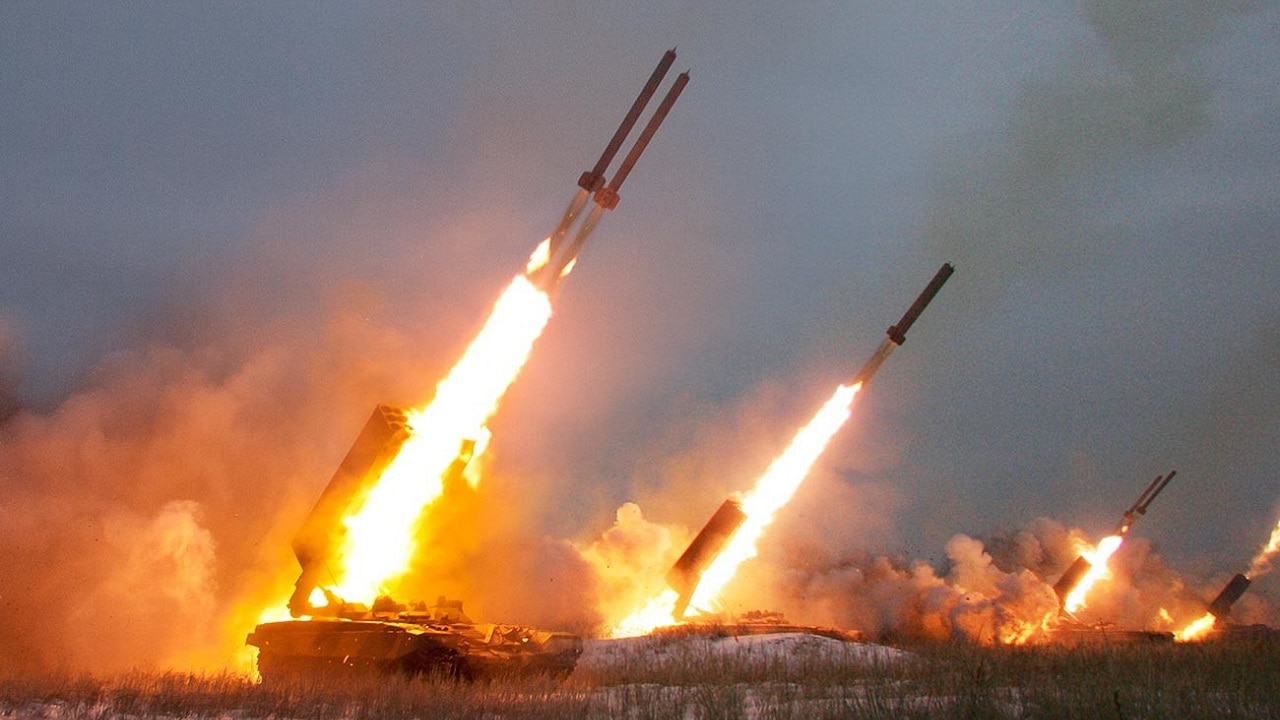In a somewhat surprising move, the Biden administration confirmed it would be providing cluster munitions to Ukraine as part of an upcoming military package.
According to U.S. National Security Adviser Jake Sullivan, these highly controversial weapons will be encased in 155mm artillery shells and accompany a staggering $800 million in additional weaponry in the latest aid package intended to support Kyiv’s counter-offensive.
Human rights groups have condemned this decision, as cluster munitions could result in higher civilian death rates. In fact, more than 120 countries have signed a convention banning these types of munitions, making the White House’s decision a contentious one.
Senior Pentagon and White House officials acknowledged that cluster bombs could be risky, however, the backing of Ukraine’s defensive efforts outweigh the risks. As explained by Sullivan, the Biden team “deferred the decision for as long as we could. But there is also a massive risk of civilian harm if Russian troops and tanks roll over Ukrainian positions and take more Ukrainian territory and subjugate more Ukrainian civilians because Ukraine does not have enough artillery. That is intolerable to us.”
What are cluster bombs?
A cluster munition is a type of ground-launched or air-dropped explosive weapon that carries hundreds of smaller submunitions (or bomblets). Depending on the area of the intended target, the submunitions are dropped from a prescribed height once the canisters break open. Since these types of bombs release smaller bombs in a wider area, they pose a higher risk to civilians during an attack and in the aftermath. In a way, these cluster bombs are similar to the minefields that currently cover large swaths of territory in Ukraine. Both unexploded mines and cluster bomblets are dangerous since they could injure or kill at unexpected times. The weapons pack such submunitions into bombs, missiles, artillery shells and other weapons, making them a versatile and lethal addition.
According to Sullivan, the cluster munitions that will be provided to Ukraine will have a dud rate of less than 2.5%. The dud rate refers to the failure rate, or length of time some unexploded bomblets could take before detonating months or perhaps years later. U.S. officials believe that the cluster bombs used by Russian forces have a much higher dud rate between 30-40%. Although a congressional mandate passed in 2017 prohibits the transfer of cluster bombs with dud rates over 1%, President Biden has the ability to bypass this law. The Biden administration can use the Foreign Assistance Act, which gives officials the ability to allow combatant commanders to use weapons with higher dud rates “in extreme situations to meet immediate warfighting demands.” Clearly, the Biden team believes the current situation in Ukraine qualifies.
Which cluster munitions will the U.S. provide?
Industry experts predict that the U.S. will send over its stockpiles of dual-purpose improved conventional munitions (DPICMS) that are no longer in use. A CNN report detailed a report released by the U.S. Army’s eArmor website, which stated that the DPICMS expected to deliver to Kyiv are fired from 155mm howitzers, with each canister carrying 88 submunitions. “Each bomblet has a lethal range of about 10 square meters, so a single canister can cover an area up to 30,000 square meters (about 7.5 acres), depending upon the height it releases the bomblets.” The Associated Press also quoted officials who said that stocks will come from Bradley and Stryker armored vehicles and the High Mobility Artillery Rocket System (HIMARS).
Have cluster bombs been used in the war previously?
The 2008 Convention on Cluster Munitions prohibits the producer, stockpiling or transfer of all cluster munitions. Notably, the U.S., Russia and Ukraine are not signatories of this ban. Both Ukraine and Russia have used cluster munitions that have resulted in the deaths of civilians since the invasion broke out in February 2022. Human Rights Watch reported that Ukrainian cluster bombers killed at least eight civilians and injured a dozen or so more in a 2022 attack in the city of Izium. Additionally, the international watchdog group cited that Russia had launched cluster bombs in at least 10 of Ukraine’s 24 regions since the war began. A particularly gruesome cluster munition attack killed at least 58 civilians when launched from a ballistic missile targeting a crowded train station in Kramatorsk last April.
Sullivan referred to Russia’s rampant use of deadly cluster munitions in a statement today, claiming that Moscow has likely expended millions of submunitions in Ukraine over the last eighteen months. “So, we have to ask ourselves is Ukraine’s use of cluster munitions on that same land actually that much of an admission of civilian harm, given that that area is going to have to be de-mined regardless,” Sullivan argued. Russia has created vast minefields in various regions in Ukraine, which are considered to be unsafe for civilian use until a proper mine clearing is carried out. Sullivan also pointed out that Kyiv has pledged to only use cluster munitions provided in a careful manner that will limit risks to civilians.
As Kyiv’s counter-offensive continues, Ukrainian forces will continue to turn to their stockpiles delivered by the U.S. and NATO allies. Already littered with landmines, Ukraine will be even more contaminated for years to come with the addition of cluster munitions.
Maya Carlin, a Senior Editor for 19FortyFive, is an analyst with the Center for Security Policy and a former Anna Sobol Levy Fellow at IDC Herzliya in Israel. She has by-lines in many publications, including The National Interest, Jerusalem Post, and Times of Israel. You can follow her on Twitter: @MayaCarlin.
From 19FortyFive
A Russian Submarine Accidently ‘Destroyed Itself’
Total Massacre’: Ukraine Footage Shows Russian Cruise Missile Shipment Attacked

